Sunshine Land (선샤인랜드)
10.4 Km 0 2024-06-03
102 Bonghwang-ro, Yeonmu-eup, Nonsan-si, Chungcheongnam-do
Sunshine Land is a cultural complex located in Nonsan, Chungcheongnam-do. One can experience and observe diverse content at this themed attraction, which is divided into four sections: Survival Experience Center, Military Experience Center, Sunshine Studio, and 1950 Studio. The Survival Experience Center and Military Experience Center incorporate VR technology for an interactive and realistic entertainment. The Sunshine Studo and 1950 Studio are decorated in the theme of aftermath of the Korean War, allowing one to get a glimpse and knowledge of how Korea was like after the war.
Himart - Nonsan Branch [Tax Refund Shop] (하이마트 논산점)
10.5 Km 0 2024-04-19
395, Jungang-ro, Nonsan-si, Chungcheongnam-do
-
Daejosa Temple (Buyeo) (대조사 (부여))
10.5 Km 20717 2020-01-08
112, Seongheung-ro 197beon-gil, Imcheon-myeon, Buyeo-gun, Chungcheongnam-do
+82-41-833-2510
Below Seongheungsanseong Fortress (built in 501 during the Baekje Kingdom) in Buyeo is an ancient temple called Daejosa (great bird temple). Inside the temple grounds stands a giant standing stone Buddha statue looking toward the east. The temple, which was founded during the 5th year of the Baekje Kingdom, has an interesting legend behind its origin.
According to the legend, an old monk fell asleep after praying under a large rock on the slopes of Seongheungsan Mountain. In his dream, a large bird glowing in gold flew in from the west and sat on the rock where Daejosa currently stands. While the bird continuoulsy flapped its wings, a ray of light shone on the rock and it was there that the statue of Avalokitasvara Bodhisattva appeared.
The old monk had the same dream at the same time for many days. He recounted his dream to the seongju (castle lord), who then reported it to King Seong of Baekje. The king interpreted the dream as a sign that it was the right time to move the capital of Baekje to Sabi (now Buyeo) and ordered the construction of a large temple at the location that appeared in the dream. The temple was so big that even at a hurried pace, it would still take 10 years to build. Workers had to work day and night, and every time the workers felt tired, birds would come singing to brighten up the atmosphere so that the workers can forget the fatigue and continue working. Hence, the temple was completed after only five years. Because of the golden bird, the temple was named Daejosa, literally meaning "temple of a great bird."
The rock on which Avalokitasvara Bodhisattva appeared in the dream was recreated as a stone statue of a Buddha. This standing stone Maitreya Bodhisattva statue is a fine work of sculpture which, along with the stone Bodhisattva of Gwanchoksa Temple (Treasure No. 218), is a representative heritage of the early Gorye period.
In front of Wontongbojeon Hall (a hall enshrining Avalokitasvara Bodhisattva) stands a pagoda. In the old days, the stone pagoda used to have only the cover stones but as the pagoda body stones were found, the structure was completely restored in 1975. This pagoda is assumed to have been built in the early days of the Goryeo Kingdom.
Buyeo Garimseong Fortress (부여 가림성)
10.9 Km 7147 2020-08-11
167, Seongheung-ro 97beon-gil, Buyeo-gun, Chungcheongnam-do
+82-41-830-2880
Garimseong Fortress is a stone fortress built on the lower reaches of the Geumgang River to protect Sabiseong Fortress, the capital of the Baekje dynasty. The fortress' parking lot is only 200 meters away from the southern entrance, allowing visitors to easily access and enjoy the view from this historical fortress. By ascending the stairway by the rocky cliff, a large tree comes into view. Known to be over 400 years old, this tree is called the "Love tree of Seongheungsan Mountain" and has even made an appearance in the drama "Seodongyo (200)." The fortress is also popular as a sunrise spot, serving as Buyeo-gun’s New Year's Eve festival venue.
Nonsan Gwanchoksa Temple (관촉사(논산))
11.6 Km 19415 2021-12-03
25, Gwanchok-ro 1beon-gil, Nonsan-si, Chungcheongnam-do
+82-41-736-5700
Gwanchoksa Temple in Nonsan, Chungcheongnam-do is located at the foot of Banyasan Mountain (100 meters in elevation). This temple enshrines a Seokjomireukbosalipsang Buddha (Treasure), which was built over the course of 38 years, beginning in 967 during the Goryeo period. According to legend, while a lady was picking fernbrake on Banyasan Mountain, she heard a baby crying. When she went over, there was no baby but instead was a large rock sticking out from the ground. Upon hearing this story, the government ordered a Buddha statue to be made from the rock. This Buddha statue, widely known as ‘Eunjimireuk Buddha,’ is the largest stone Buddha in Korea (18.12 meters in x_height, 9.9 meters in girth, 1.8 meters in the length of ears, 2.43 meters at the x_height of crown). There are many other cultural heritages in this temple and every April, a splendid cherry blossom tunnel stretching from Nonsan to Gwanchoksa Temple is at its peak.
Mireuksa Temple Site [UNESCO World Heritage] (익산 미륵사지 [유네스코 세계문화유산])
14.2 Km 22104 2024-04-07
362, Mireuksaji-ro, Iksan-si, Jeonbuk-do
+82-63-859-3873
Mireuksa was the largest Buddhist temple of the ancient Baekje Kingdom (18 BC-AD 660). According to Samgukyusa (historical records published in 1281), King Mu (30th king of Baekje, in power AD 600-641) and his wife Queen Seonhwa were said to have seen a vision of Mireuksamjon (the three Sanskrit) emerging from a large pond. At the time of their revelation, the king and queen were on their way to visit a Buddhist monk in Sajasa Temple on Yonghwasan Mountain (now known as Mireuksan Mountain). In response to their vision, the king drained the nearby pond and established Mireuksa Temple. The temple is believed to have shown the most advanced architectural and cultural skills of Baekje, Silla, and Goguryeo (the three main kingdoms at that time). Records indicate that King Jinpyeong of Silla even sent his craftsmen over to assist with the temple construction.
The two main features of the Mireuksa Temple Site are the stone pagoda (Mireuksaji Seoktap) and the flagpole supports (Mireuksaji Dangganjiju). The 14.24-meter-high west stone pagoda (National Treasure No. 11) is the oldest and largest Korean stone pagoda in existence. The west pagoda currently has only six tiers, but is estimated to originally have had nine. The nine-story east stone pagoda (27.67 meters in x_height) was restored to its original stature in 1993 based on historical records. Other surviving landmarks include the flagpole supports (Treasure No. 236) to the south of the stone pagodas. The 395 centimeter-tall poles are estimated to have been created during the Unified Silla period (AD 676-935) and are set 90 meters apart from east to west.
Buyeo Naseong Fortress [UNESCO World Heritage] (부여 나성 [유네스코 세계문화유산])
14.3 Km 27294 2021-07-22
100-11, Dongmun-ro142beon-gil, Buyeo-gun, Chungcheongnam-do
+82-41-830-2623
Buyeo Naseong, also known as the Outer City Wall, was built to protect the capital of Baekje, Sabi. It has a x_height of about 8.4 kilometers. The wall surrouned Busosanseong Fortress and extended to the city of Buyeo.
The wall is one of the oldest walls along with Naseong in Pyeongyang and it is estimated to have been built around 538, when the Baekje capital was changed from Woonjin (current Gongju) to Sabi (current Buyeo). The wall of the fortress starts from the site where Dongmun (East gate) was located to the area of Geumgang River, made by piling soil up. However, only a few traces remain of its former glory.
For now, it leaves a blurry trail including a 20 meter area to the east of Cheongsanseong Fortress, Dongmun Bridge from Seokmok-ri, and an area from Pilseobong Peak to Yeomchang-ri. While the outer wall is sharply sloped, the inner wall was built with a gentle slope to make it easier for horses to reach the guard posts on the top of the wall. Inside the fortress, the palace of Baekje, government offices, houses, temples, stores and protected facilities can be seen. The entire structure of Naseong Fortress features Geumgang River in the south and west sides, providing a natural double-defense system. The wall was one of the important outer defense facilities along with Cheongsanseong and Cheongmasanseong Fortresses.
* Area: 554,591 ㎡
Iksan National Museum (국립익산박물관)
14.3 Km 14685 2024-04-07
362, Mireuksaji-ro, Iksan-si, Jeonbuk-do
+82-63-830-0900
Iksan National Museum is located near Mireuksa Temple Site (Historic Site No. 150), one of the largest temples of the Baekje dynasty during the Three Kingdoms Period. A total of roughly 19,200 artifacts were unearthed during archaeological research in 1980-1996, and the museum was opened as Mireuksa Temple Site National Museum in 1997 to display these findings. The Stone Pagoda of Mireuksa Temple Site (National Treasure No. 11) was restored in 2009, and the site was recognized as a World Heritage by the UNESCO in 2015, afterwhich the museum name was changed to the current Iksan National Museum. The museum also offers various cultural events and programs, including on-site education, historical and cultural lectures, and summer culture school.
Sinseong-ri Reed Field (신성리 갈대밭)
14.6 Km 10782 2019-09-04
125-1, Sinseong-ri, Seocheon-gun, Chungcheongnam-do
+82-41-952-9525
As one of Korea’s top four fields of reeds, Sinseong-ri Reed Field (nearly 60,000 pyeong) has also been popularized as a filming location of the mega-hit Korean movie, “JSA.”
To protect the natural environment, only 2-3% of the entire area of field of reed has been developed into a park. About 100,000 migratory birds (40 species) pass through every winter (especially in December and January). In fall, the golden fields of reeds create a romantic atmosphere along the banks of the glittering Geumgang River.
Nearby tourist attractions include a riverbank resort, Wolmyeong Park (in Gunsan), Chunjangdae Beach (in Seocheon-gun) and Hansan Ramie Fabric Museum.
* Period to see the golden fields: July to February
Nonsan Tapjeongho Suspension Bridge (논산 탑정호 출렁다리)
15.1 Km 0 2022-12-29
Jongyeon-ri, Nonsan-si, Chungcheongnam-do
+82-41-746-6645
Tapjeongho Suspension Bridge is located in the second biggest lake in Chungcheongnam-do. With clear waters from Daedunsan Mountain filling the lake, visitors can enjoy beautiful sunsets as well as various water sports.
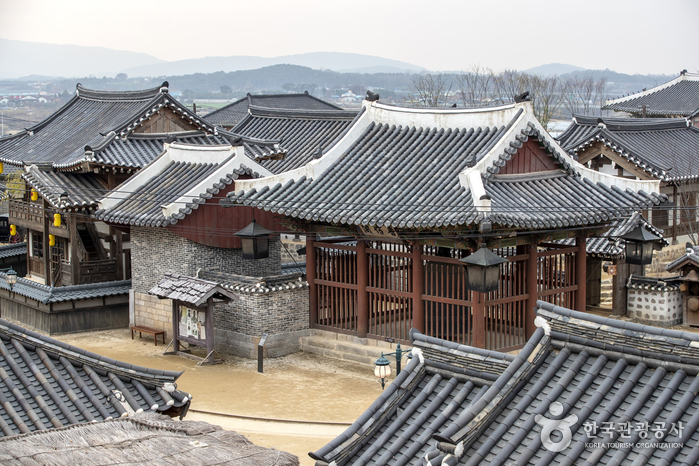
![Himart - Nonsan Branch [Tax Refund Shop] (하이마트 논산점)](http://tong.visitkorea.or.kr/cms/resource/45/2883345_image2_1.jpg)
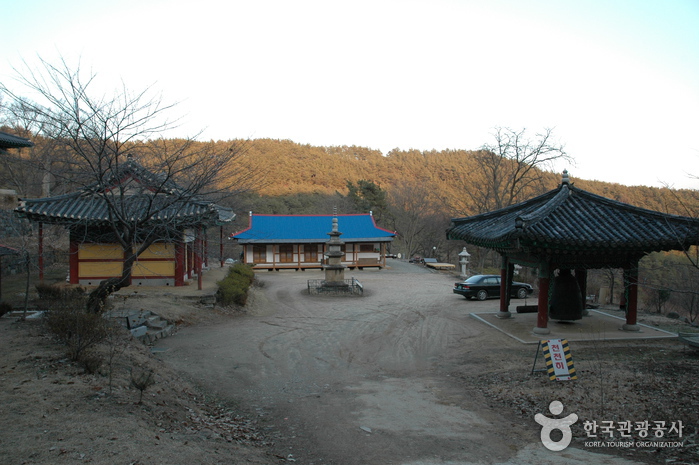

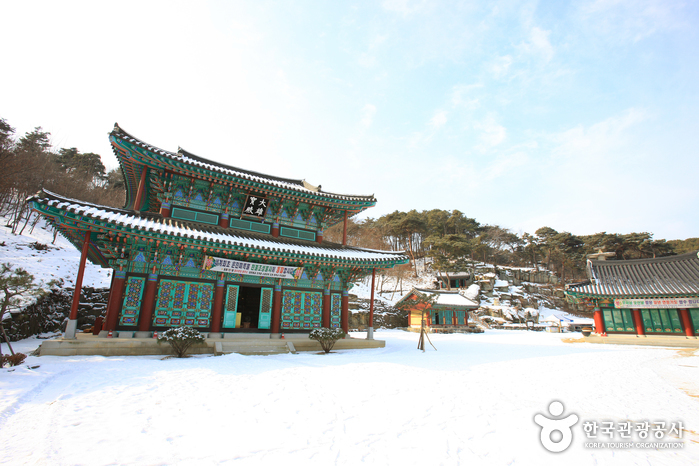
![Mireuksa Temple Site [UNESCO World Heritage] (익산 미륵사지 [유네스코 세계문화유산])](http://tong.visitkorea.or.kr/cms/resource/91/2514991_image2_1.jpg)
![Buyeo Naseong Fortress [UNESCO World Heritage] (부여 나성 [유네스코 세계문화유산])](http://tong.visitkorea.or.kr/cms/resource/71/2725771_image2_1.jpg)
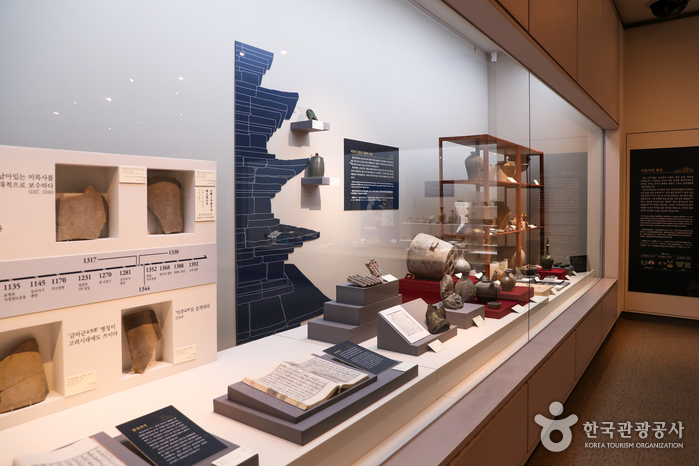
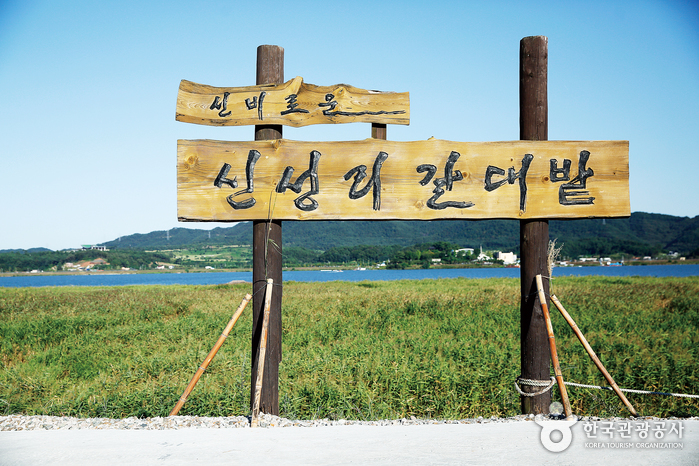
 English
English
 한국어
한국어 日本語
日本語 中文(简体)
中文(简体) Deutsch
Deutsch Français
Français Español
Español Русский
Русский